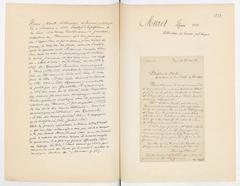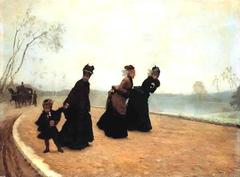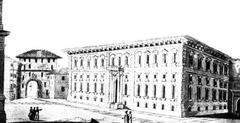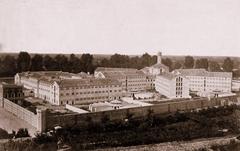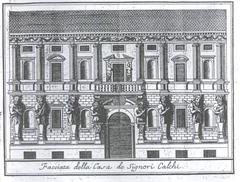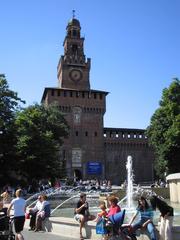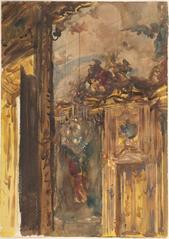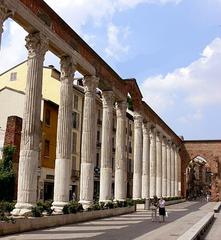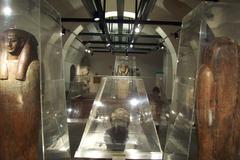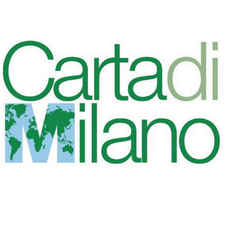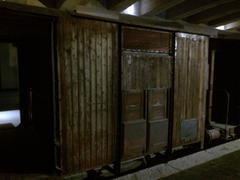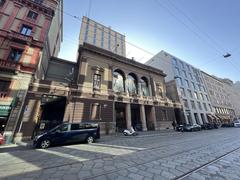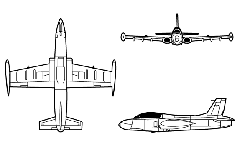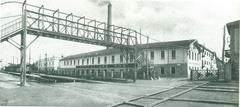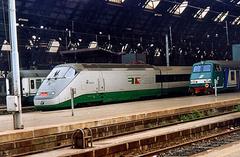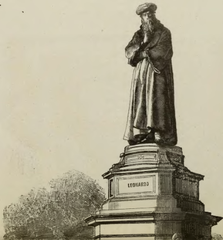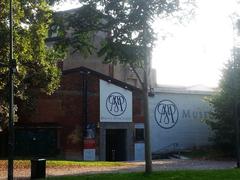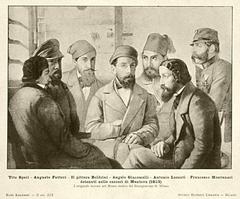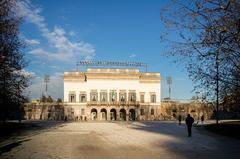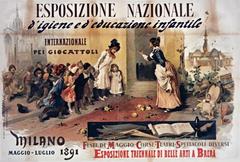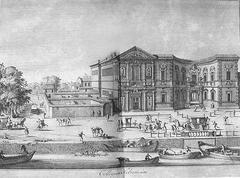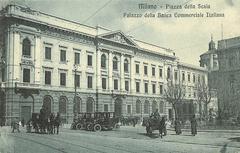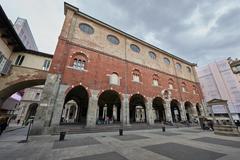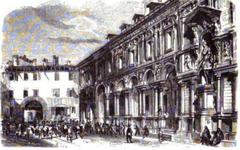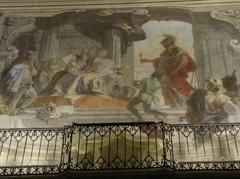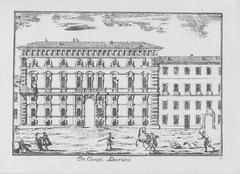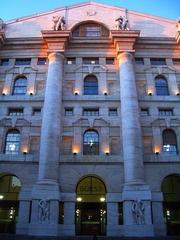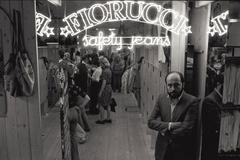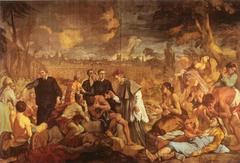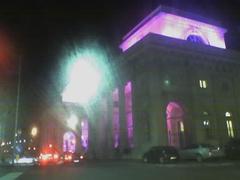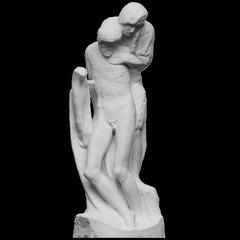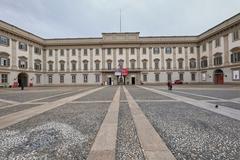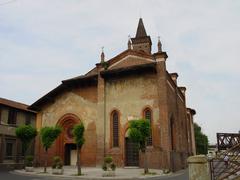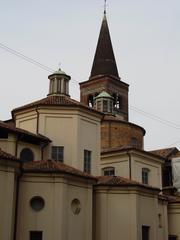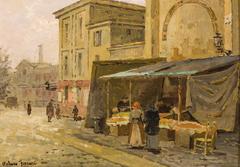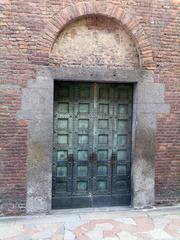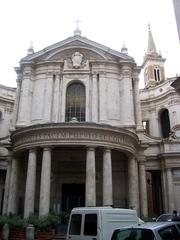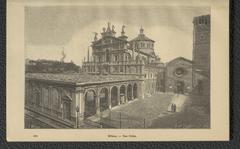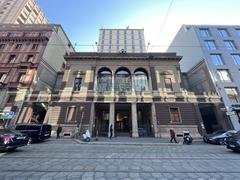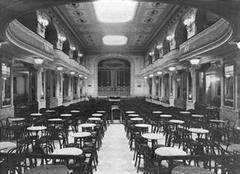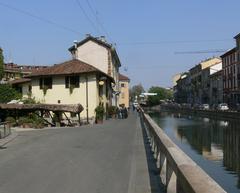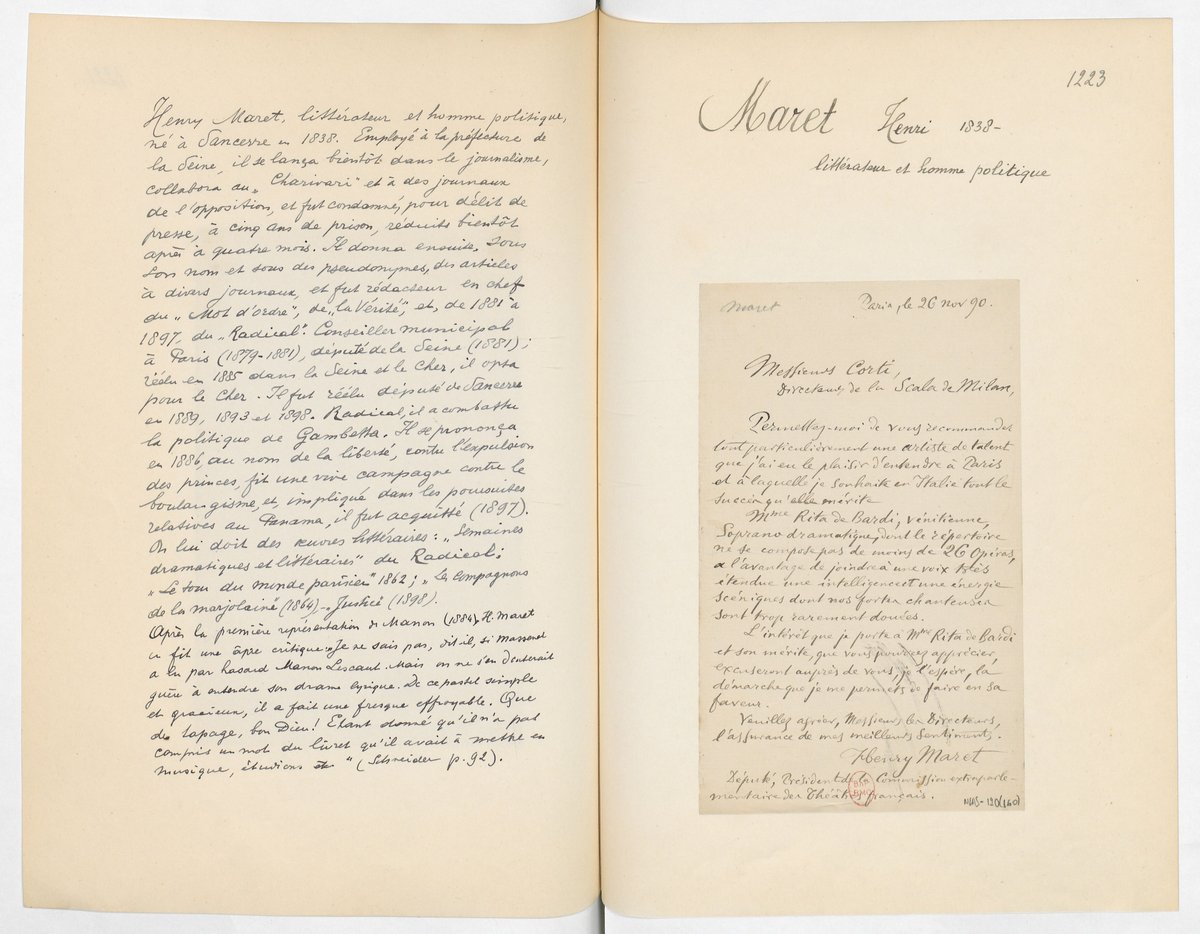
Teatro alla Scala: Visiting Hours, Tickets, and Historical Insights
Date: 23/07/2024
Introduction
Welcome to Teatro alla Scala, Milan’s crown jewel in the world of opera and an emblem of cultural and historical grandeur. Teatro alla Scala, commonly known as La Scala, stands as one of the most prestigious opera houses globally, captivating countless visitors with its rich legacy and architectural splendor. The theatre’s origins trace back to the 18th century when Empress Maria Theresa of Austria commissioned its construction following the destruction of the previous Teatro Regio Ducale by fire in 1776. Renowned neoclassical architect Giuseppe Piermarini designed La Scala, and it opened its doors on August 3, 1778, with Antonio Salieri’s opera ‘L’Europa riconosciuta’ (La Scala Official Website). Over the centuries, it has been a pivotal stage for the premieres of operatic masterpieces by legendary composers such as Gioachino Rossini, Vincenzo Bellini, Gaetano Donizetti, and Giuseppe Verdi, solidifying its stature in the annals of music history (Encyclopaedia Britannica). This guide delves into the rich history of La Scala and provides comprehensive visitor information to help you make the most of your visit to this iconic venue.
Table of Contents
- Introduction
- Origins and Construction
- 19th Century - The Golden Age
- Early 20th Century - Modernization and Challenges
- Post-War Era - Revival and Expansion
- 21st Century - Renovation and Digital Transformation
- Visitor Information
- Nearby Attractions
- Cultural Significance
- Notable Premieres and Productions
- FAQ
- Conclusion
Origins and Construction
Teatro alla Scala, commonly known as La Scala, is one of the most renowned opera houses in the world. Its origins date back to the late 18th century. The theatre was commissioned by Empress Maria Theresa of Austria after the previous theatre, Teatro Regio Ducale, was destroyed by fire in 1776. The new theatre was designed by the neoclassical architect Giuseppe Piermarini and was constructed on the site of the church of Santa Maria alla Scala, from which it derives its name. The construction was completed in a remarkably short period, and La Scala officially opened on August 3, 1778, with Antonio Salieri’s opera “L’Europa riconosciuta” (La Scala Official Website).
19th Century - The Golden Age
The 19th century marked the golden age of La Scala, during which it became a central hub for the development of Italian opera. This period saw the premieres of many works by some of the most celebrated composers in history. Gioachino Rossini, Vincenzo Bellini, Gaetano Donizetti, and Giuseppe Verdi all had their operas performed at La Scala. Verdi, in particular, had a long and fruitful association with the theatre, with many of his operas, including “Nabucco” and “Otello,” premiering there. The theatre’s orchestra and chorus also gained prominence during this time, contributing to its reputation as a leading opera house (Encyclopaedia Britannica).
Early 20th Century - Modernization and Challenges
The early 20th century brought significant changes and challenges to La Scala. Arturo Toscanini, one of the most influential conductors of the time, became the musical director in 1898 and played a crucial role in modernizing the theatre’s productions and repertoire. Under his leadership, La Scala embraced contemporary works and introduced innovations in staging and performance. However, the theatre also faced difficulties, including financial struggles and the impact of World War I.
During World War II, La Scala suffered severe damage from bombing raids. The theatre was almost completely destroyed in 1943, but efforts to rebuild it began immediately after the war. The reconstruction was completed in 1946, and La Scala reopened with a concert conducted by Toscanini, symbolizing the resilience and cultural significance of the institution (La Scala History).
Post-War Era - Revival and Expansion
The post-war era saw La Scala regain its status as a premier opera house. The theatre continued to attract leading artists and conductors, and its productions were acclaimed for their artistic excellence. In the 1950s and 1960s, La Scala hosted performances by legendary singers such as Maria Callas, Renata Tebaldi, and Luciano Pavarotti. The theatre also expanded its repertoire to include works by contemporary composers and staged innovative productions that pushed the boundaries of traditional opera (New York Times).
21st Century - Renovation and Digital Transformation
In the early 21st century, La Scala underwent a major renovation to modernize its facilities and preserve its historical features. The renovation, which took place from 2002 to 2004, included the restoration of the auditorium, the construction of new rehearsal spaces, and the installation of advanced technical equipment. The theatre reopened in December 2004 with a performance of Salieri’s “L’Europa riconosciuta,” echoing its inaugural performance in 1778 (BBC News).
In recent years, La Scala has embraced digital technology to reach a global audience. The theatre offers live streaming of its performances, allowing opera enthusiasts around the world to experience its productions. La Scala also engages with audiences through social media and other digital platforms, ensuring that its rich cultural heritage remains accessible in the digital age (La Scala Digital).
Visitor Information
Visiting Hours
The theatre is generally open for tours from 9:00 AM to 5:30 PM, but it’s advisable to check the official website for any changes or special events (La Scala Visiting Hours).
Tickets
Tickets for performances can be purchased online through the official La Scala website or at the box office. Prices vary depending on the performance and seating arrangement (Teatro alla Scala Tickets).
Location
Teatro alla Scala is located at Via Filodrammatici 2, 20121 Milan, Italy.
Accessibility
The theatre is accessible to visitors with disabilities. There are designated seating areas and facilities to accommodate their needs (Accessibility at La Scala).
Nearby Attractions
While visiting Teatro alla Scala, you can also explore several other historical sites and attractions in Milan, including:
- Duomo di Milano: Milan’s iconic cathedral, located just a short walk from La Scala (Duomo di Milano).
- Galleria Vittorio Emanuele II: A stunning 19th-century shopping arcade near the theatre (Galleria Vittorio Emanuele II).
- Pinacoteca di Brera: An art gallery showcasing Italian Renaissance masterpieces (Pinacoteca di Brera).
Cultural Significance
Teatro alla Scala holds a unique place in the cultural landscape of Milan and the world. It is not only a venue for opera and ballet but also a symbol of artistic excellence and innovation. The theatre’s history is intertwined with the development of Italian opera, and its influence extends beyond the realm of music to encompass broader cultural and social trends. La Scala’s commitment to artistic excellence, its embrace of contemporary works, and its efforts to engage with new audiences ensure that it remains a vital and dynamic institution (La Scala Cultural Impact).
Notable Premieres and Productions
Throughout its history, La Scala has been the site of numerous notable premieres and productions. Some of the most significant include:
- “Nabucco” by Giuseppe Verdi (1842): This opera marked Verdi’s breakthrough and established him as a leading composer of his time. The chorus “Va, pensiero” became an anthem of Italian nationalism (Verdi’s Nabucco).
- “Madama Butterfly” by Giacomo Puccini (1904): Although the initial performance was not well-received, subsequent revisions led to its success, and it is now one of Puccini’s most beloved operas (Puccini’s Madama Butterfly).
- “Turandot” by Giacomo Puccini (1926): This opera, left unfinished at Puccini’s death, was completed by Franco Alfano and premiered at La Scala under the direction of Toscanini (Puccini’s Turandot).
FAQ
Q: What are the opening hours of Teatro alla Scala? A: The theatre is generally open for tours from 9:00 AM to 5:30 PM, but it’s advisable to check the official website for any changes or special events.
Q: How can I buy tickets for a performance at Teatro alla Scala? A: Tickets for performances can be purchased online through the official La Scala website or at the box office. Prices vary depending on the performance and seating arrangement.
Q: Is Teatro alla Scala accessible for visitors with disabilities? A: Yes, the theatre is accessible to visitors with disabilities. There are designated seating areas and facilities to accommodate their needs.
Conclusion
Teatro alla Scala is more than an opera house; it is a monument to artistic excellence and cultural heritage. From its origins in the 18th century to its modern-day digital transformation, La Scala has continually evolved while retaining its historical charm and significance. Its storied past is marked by world-renowned premieres and performances by legendary artists, making it a must-visit destination for opera enthusiasts and history buffs alike. Visiting La Scala offers not just a glimpse into the grandeur of Italian opera but also a deeper appreciation of Milan’s rich cultural tapestry. Whether you are attending a performance, exploring the museum, or simply soaking in the architectural beauty, Teatro alla Scala promises an unforgettable experience. For more detailed information and updates, be sure to visit the official Teatro alla Scala website and follow their social media channels for the latest news and exclusive content.
References
- La Scala Official Website https://www.teatroallascala.org/en/index.html
- Encyclopaedia Britannica https://www.britannica.com/topic/La-Scala
- BBC News http://news.bbc.co.uk/2/hi/entertainment/4072063.stm
- New York Times https://www.nytimes.com/
- Verdi’s Nabucco https://www.teatroallascala.org/en/season/opera-ballet/2023-2024/nabucco.html
- Puccini’s Madama Butterfly https://www.teatroallascala.org/en/season/opera-ballet/2023-2024/madama-butterfly.html
- Puccini’s Turandot https://www.teatroallascala.org/en/season/opera-ballet/2023-2024/turandot.html
- Architectural Digest https://www.architecturaldigest.com/
- Verdi’s La Scala https://www.verdi.com/
- La Scala Ballet https://www.lascala.com/
- La Scala Digital https://www.teatroallascala.org/en/scala-on-line.html
- La Scala Academy https://www.accademialascala.it/en/
- Milan Tourism https://www.tourism.milan.it/
- Restoration Project https://www.architecturaldigest.com/
- Opera Europa https://www.opera-europa.org/
- La Scala Visiting Hours https://www.teatroallascala.org/en/museum.html
- Teatro alla Scala Tickets https://www.teatroallascala.org/en/season/tickets.html
- La Scala Guided Tours https://www.teatroallascala.org/en/museum/guided-tours.html
- La Scala Museum https://www.teatroallascala.org/en/museum.html
- Milan Travel Guide https://www.tourism.milan.it/
- Accessibility at La Scala https://www.teatroallascala.org/en/accessibility.html
- Duomo di Milano https://www.duomomilano.it/en/
- Galleria Vittorio Emanuele II https://www.yesmilano.it/en/see-and-do/venues/galleria-vittorio-emanuele-ii
- Pinacoteca di Brera https://pinacotecabrera.org/en/
- Instagram https://www.instagram.com/teatroallascala/
- Facebook https://www.facebook.com/TeatroallaScala
